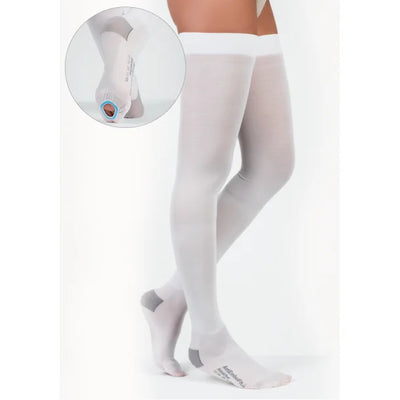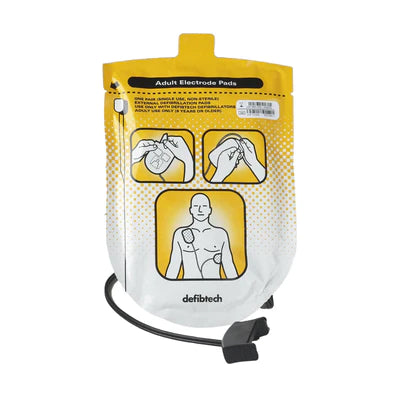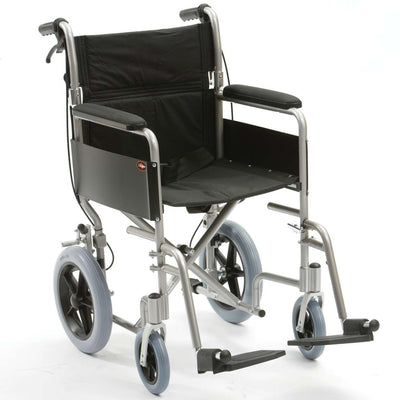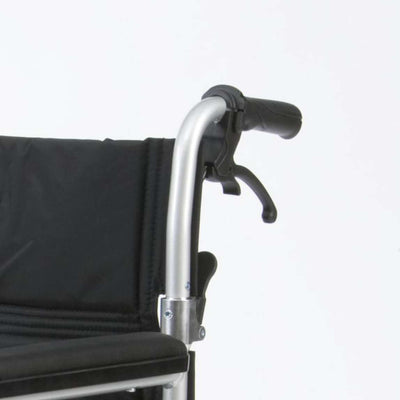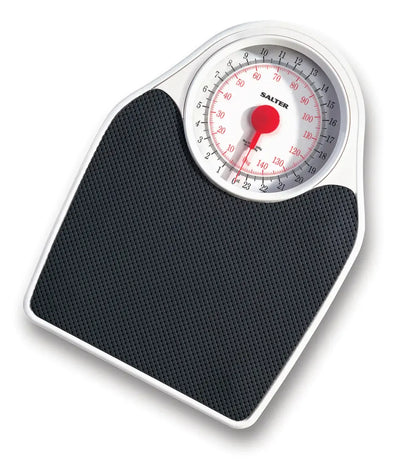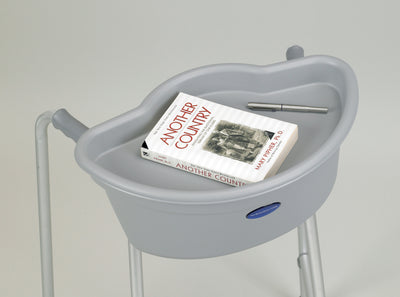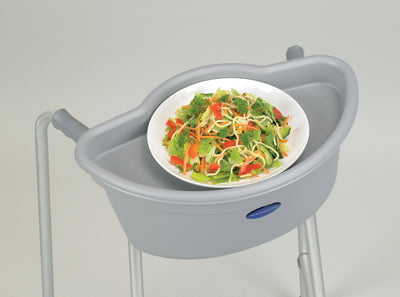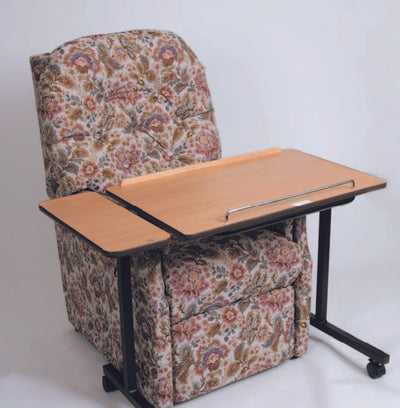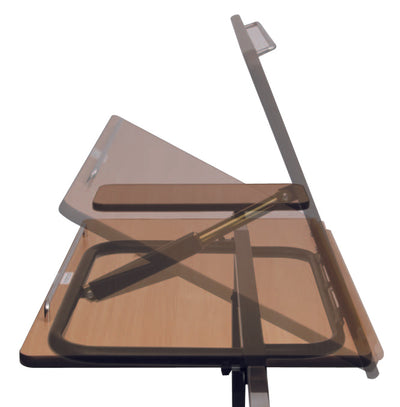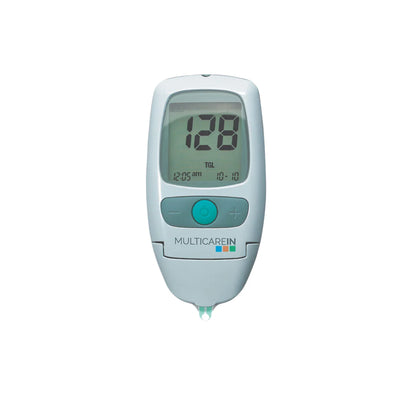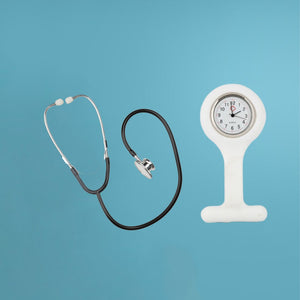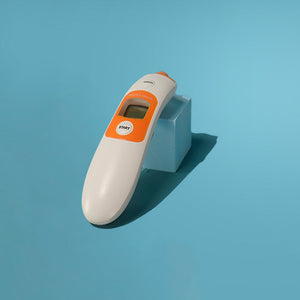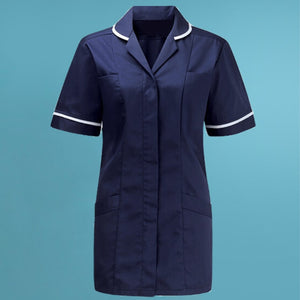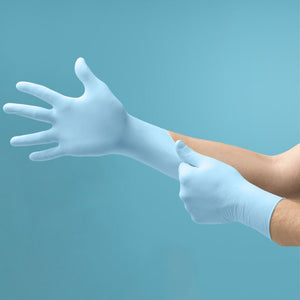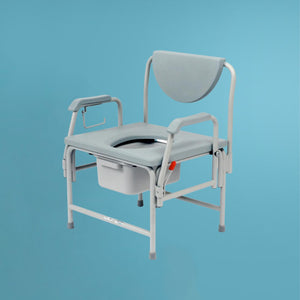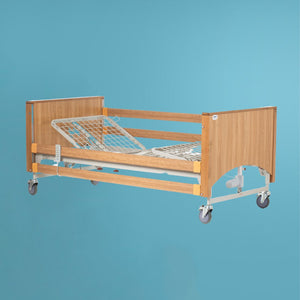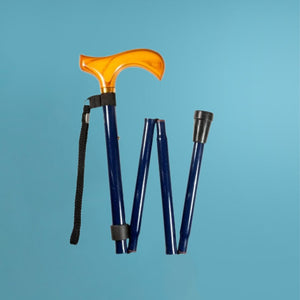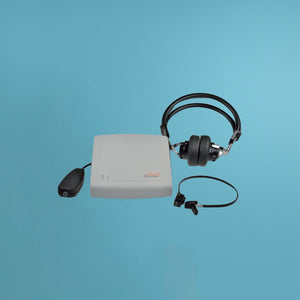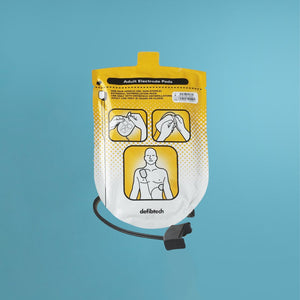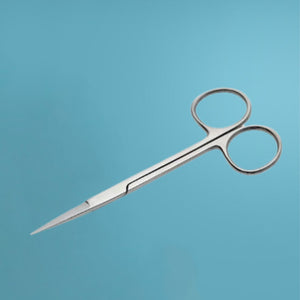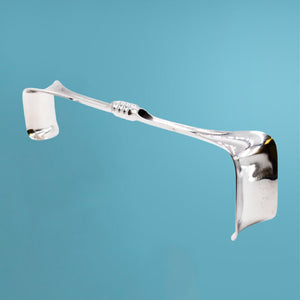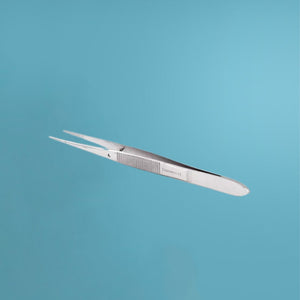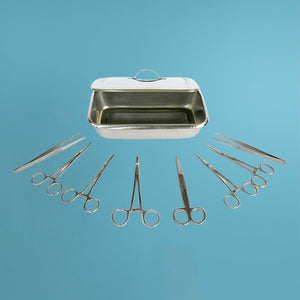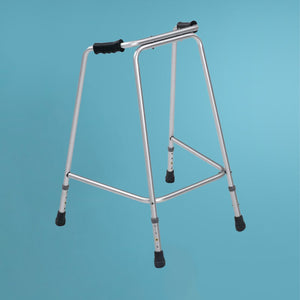Blogs
Learn about how best to manage your blood pressure.

How to Avoid Deep Vein Thrombosis (DVT)
06.02.2024
Thrombosis (Deep Vein Thrombosis or DVT) is one of the largest causes of death here in the UK, yet many of us have little or no understanding of what causes it, how to recognise the symptoms or how to prevent it.With an estimated 1 in 1,000 people developing a DVT each year in the UK, read on to learn more about this very common, yet potentially life threatening condition.
What is Deep Vein Thrombosis (DVT)?
A deep vein thrombosis is a blood clot (or thrombus) that occurs in the veins, most commonly in the legs but can appear in other areas of the body including the arms.
There are two types of veins in our bodies: deep and superficial. Deep veins in the legs are the larger ones that go through the muscles of the calf and thighs. Not to be confused with varicose veins, these deep veins lie further down, too deep for us to see from the surface of the skin.
When blood flow through the deep vein is partially or completely blocked, often due to immobility, a blood clot (or thrombus) can form, reduce or even stop the blood flow and begin to cause potential problems.
What causes deep vein thrombosis (DVT)?
Sometimes a blood clot can appear for no apparent reason, but in most cases the thrombus will develop due to one or more of the following reasons:
Injury that requires the patient to remain immobile for some time. A leg fracture, for example, where the leg is in a cast can be a cause of DVT due to the inability to move the limb and encourage healthy blood flow through the veins.
Surgery. Unfortunately, the risks of developing a DVT are higher in people undergoing surgery with a general anaesthetic because of the temporary paralysis it causes and the subsequent immobility during recovery.
Long journeys (plane/coach/car) can create a slight increase in risk, again due to the long periods of time spent in one position with no movement to allow for healthy blood flow through the veins.
Pregnancy - around 1 in 1000 pregnant mothers will develop a DVT during or within 6 months of pregnancy.
Obesity. If your Body Mass Index (BMI) is above 30 you are at a much higher risk of developing DVT.
Other causes can include heart disease, cancer, HRT or combined contraceptive pill, being over the age of 60 and low levels of hydration.
What are the symptoms of deep vein thrombosis (DVT)?
Since most DVTs occur in the lower leg the most common symptoms include:
Pain or tenderness or swelling around the calf
A discolouration of the calf area
A ‘hot’ area around the calf. The blood that usually flows through the deep vein is diverted to the outer veins, closer to the skin, and causes a temperature rise.
Unfortunately, nearly half of DVT episodes have minimal or no symptoms at all. These “silent” symptoms are particularly concerning and give heed to the importance of the use of daily prevention techniques.
How do I prevent deep being thrombosis (DVT)?
While DVT can be treated, by far the best “treatment” for DVT is to prevent it from occurring in the first place.
Keep active
Maintain a healthy weight
Give up smoking and other factors that increase risk of heart disease and cancers.
Wear travel compression socks if you’re travelling or need to sit in one position for a prolonged period of time.
Compression Stockings (anti-embolism stockings)
Most people who develop a DVT will be advised to wear compression stockings to reduce the risk of developing another DVT and the risk of developing post-thrombotic syndrome. You will be advised by your medical professional on how and when to wear them but on average they should be worn each day, for at least two years after developing a DVT.
Compression stockings work by applying pressure from outside the veins. This helps squeeze the blood in the veins back up the legs. This then makes the pressure inside the veins less. In turn this prevents leakage of blood into the surrounding tissues.
If you are concerned or are experiencing any of the symptoms listed above please seek urgent medical help.
Need more help with buying the right compression socks or stockings? We're always here to help so get in touch today.
For all your Medical and Homecare supplies give us a call at Mediworld.
We have over 40 years experience in medical, surgical, mobility and home health supplies and we're always on hand to chat if you need support or advice. Follow us on Twitter and Facebook and don't forget to read our other great health blogs!
Learn More Now
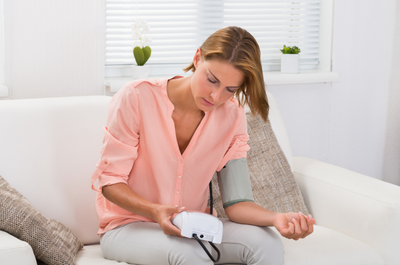
Should I monitor blood pressure at home?
06.02.2024
More than one in four adults have hypertension here in the UK. Many millions of us are, unknowingly, living with high blood pressure and leaving ourselves vulnerable to the serious and sometimes fatal health conditions that can lead to. Every day in the UK around 350 people have a stroke or heart attack that could have been prevented.
So, is it beneficial to regularly monitor our own blood pressure at home? The answer is a definitive yes.
Why test at home?
Home blood pressure monitoring is an effective and inexpensive way to keep blood pressure under control and the evidence behind it continues to get stronger. You can test yourself very easily and cheaply using a simple home blood pressure monitor.
Home Monitoring allows you to take control of your health in your own time. It gives you a practical way to monitor your blood pressure health without the stress of visiting your GP or pharmacist, and it really can save your life.
Staying healthy
Around a third of people in the UK have high blood pressure, but most don’t know it. It doesn’t have any symptoms so, the only way to find out is to have a blood pressure check.
High blood pressure can lead to heart attacks, strokes and other illnesses. Once you begin to regularly monitor your blood pressure with your own blood pressure monitor you can start to form an understanding of the patterns your body is following and, more importantly, stop your blood pressure from going too high and protect yourself from these diseases.
How to Monitor your own Blood Pressure
Place the arm cuff just above your elbow, ideally 2cm above your elbow to detect the artery in your arm just under your skin.
Sit down with your legs uncrossed.
Keep calm and still while you take your reading. Try not to talk, eat, drink or laugh while using your monitor.
Take 2, or even 3, readings about one to two minutes apart. With 3 readings you can work out the average. If one reading is significantly higher or lower than the others you should ignore it.
Keep a record of your readings. Write down your measurements exactly as they appear on the screen of your blood pressure monitor
How often should you monitor your own blood pressure?
It’s best to consult your GP or practice nurse before monitoring your blood pressure at home. They will be able to advise you on when and how often to take a measurement and how to recognise when your blood numbers are too high or too low.
When you first start using a home monitor, measure your blood pressure in the morning and evening, every day for a week.
At the end of the week you will have a useful picture of what your blood pressure is normally like.
Once you have a record of your blood pressure over a week, you can take readings less often – once every one to two weeks perhaps. Your doctor or nurse can talk to you about this, there’s no need to measure it too often.
If your blood pressure has been stable for a long time, you might only need to measure it once every four to six months. Your doctor or nurse will be able to advise you and will probably suggest that if you change your medication you should increase your blood pressure monitoring for a while too.
More resources
The charity Blood Pressure UK* is a fantastic resource for information on monitoring your blood pressure and how to keep those numbers at a healthy level.
. * Info, stats and resources for this blog credit to Blood Pressure UK.
Need more help to find the right blood pressure monitor for your needs? We're always here to help so get in touch today.
For all your Medical and Homecare supplies give us a call at Mediworld.
We have over 40 years experience in medical, surgical, mobility and home health supplies and we're always on hand to chat if you need support or advice. Follow us on Twitter and Facebook and don't forget to read our other great health blogs!
Learn More Now

How to avoid developing deep vein thrombosis
06.02.2024
Around 1 in 1000 people in the UK will develop Thrombosis (Deep Vein Thrombosis or DVT) every year. It can be painful but it can also, unfortunately, be fatal.
So, what are the signs of DVT and how can you avoid becoming at risk of developing a serious, life-threatening thrombosis?
What is Deep Vein Thrombosis (DVT)?
DVT is a blood clot (or thrombus) that occurs in the veins, most commonly in the legs or the arms.
When blood flow through the deep vein is partially or completely blocked, often due to immobility, a blood clot (or thrombus) can form, reduce or even stop the blood flow and begin to cause potential problems.
How to recognise a deep vein thrombosis (DVT)
Since most DVTs occur in the lower leg the most common symptoms to look out for are:
Pain or tenderness or swelling around the calf
A discolouration of the calf area
A ‘hot’ area around the calf. The blood that usually flows through the deep vein is diverted to the outer veins, closer to the skin, and causes a temperature rise.
How do I prevent deep vein thrombosis (DVT)?
Eliminate the risk of developing a DVT by:
Keeping active - Being sedentary for long periods of time is a risk factor for DVT, so increase your cardiovascular exercise by walking, jogging, cycling or swimming. If you sit for long periods of time at work, for example, try to get up every 15-20 minutes for a short walk around the office or if that’s not possible wiggle your toes and move your feet and legs around under the desk as often as you can
Maintaining a healthy weight - if you’e obese, lose weight. The risk of DVT is much greater if you are overweight or obese.Any excess weight makes it more difficult to circulate blood around the body, particularly back to the heart from the feet and legs, thus making clotting more likely.
Quiting Smoking - The risk of DVT is also greater if you are a chronic cigarette smoker. Smoking thickens the blood and makes it easier for clots to get stuck and cause serious problems. Smoking is a significant factor in the majority of DVT sufferers across the world.
Wearing compression socks - if you’re travelling or need to sit in one position for a prolonged period of time. Compression stockings work by applying pressure from outside the veins. This helps squeeze the blood in the veins back up the legs. This then makes the pressure inside the veins less. In turn this prevents leakage of blood into the surrounding tissues.
If you are concerned or are experiencing any of the symptoms listed above please seek urgent medical help.
Need more help with buying the right compression socks or stockings? We're always here to help so get in touch today.
For all your Medical and Homecare supplies give us a call at Mediworld.
We have over 40 years experience in medical, surgical, mobility and home health supplies and we're always on hand to chat if you need support or advice. Follow us on Twitter and Facebook and don't forget to read our other great health blogs!
September 2022
Learn More Now
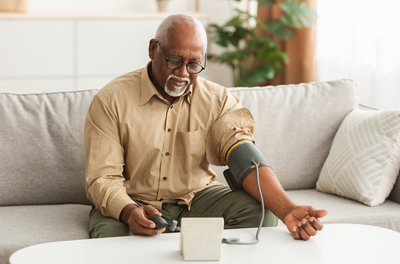
Blood Pressure Kits for Home Testing
19.09.2023
It’s May Measure Month - a health campaign aimed at getting everyone in the world to have their blood pressure checked.
Over 10 million lives worldwide are lost to high blood pressure every year and around ⅓ of people in the UK have high blood pressure, many of whom are undiagnosed. Yet, soaring blood pressure is responsible for strokes, heart attacks and other cardiovascular complications which kill, or seriously harm, hundreds of people every single day.
How to get involved
May Measurement Month is promoting two simple ways to get involved and quickly have your blood pressure checked.
The first option is to book an appointment with your GP or local health centre for a free blood pressure screening. It takes just a minute to check but could save your life.
The second option, if you’re unable to get to a surgery, is to measure your blood pressure at home. It’s a LOT easier than you might think and a validated blood pressure monitor is inexpensive to buy and incredibly simple to use.
In fact owning your own blood pressure monitor will allow you to regularly check and monitor your own levels as a great preventative health measure that you can control yourself as and when it suits you to test.
Why test at home?
Home blood pressure monitoring is an effective and inexpensive way to keep blood pressure under control and the evidence behind it continues to get stronger. You can test yourself very easily and cheaply using a simple home blood pressure monitor.
Home Monitoring allows you to take control of your health in your own time. It gives you a practical way to monitor your blood pressure health without the stress of visiting your GP or pharmacist, and it really can save your life.
Which blood pressure monitor should I buy?
It’s easier than ever to monitor your blood pressure in your own home. Check out our previous blog on how to measure your blood pressure at home for a quick and easy guide to getting it right.
Monitoring your levels takes just one minute and there are a huge amount of blood pressure measuring devices on the market. These are just a few that we would recommend, for between just £25 and £70:
Omron Basic
Omron RS 2 Wrist monitor
Omron Comfort
What do the numbers mean?
A blood pressure reading consists of two numbers:
Systolic – The first number, which indicates pressure in the arteries when the heart beats.
Diastolic – The second number, which indicates pressure in the arteries when the heart relaxes between beats.
If the first number is 110 and the second number is 70, this would be written as 110/70. Blood pressure is measured in millimetres of mercury (mmHg) so the reading would be 110/70mmHg or may be referred to as 110 over 70.
You can use this chart to determine whether your blood pressure is within the healthy range. It's as simple as that!
This May Measure Month, why not invest in yourself and buy a home testing kit to keep your blood pressure under control.
If you’re at all concerned about your figures you should book an appointment to see your GP to chat about how you can keep your blood pressure at a healthy level. There are some great resources for checking blood pressure and keeping healthy on the NHS website.
Need more help? We're always here to help so get in touch today.
For all your Medical and Homecare supplies give us a call at Mediworld.
We have over 40 years experience in medical, surgical, mobility and home health supplies and we're always on hand to chat if you need support or advice and don't forget to read our other great health blogs!
May 2022
Learn More Now
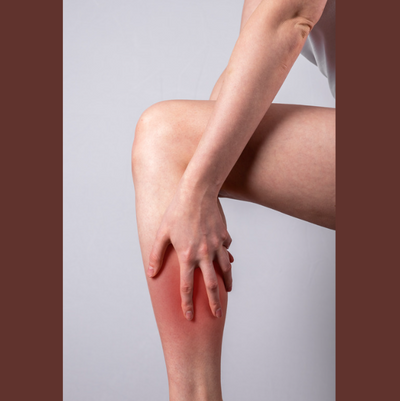
How to Spot a Blood Clot or DVT
20.09.2023
Blood Clots or deep vein thrombosis (DVT), are serious, potentially life-threatening conditions so it’s important to know how to recognise the symptoms.
Early diagnosis, as with many conditions, opens up more options for treatment and lessens the likelihood of the clot becoming fatal.
Here are the four telltale signs that you should keep an eye out for if you’re concerned about developing DVT. These 4 symptoms are most likely to occur in your legs, but can appear in the arms or much less frequently in the neck, pelvis or liver.
Swelling
DVT occurs when the flow of blood through the veins is obstructed by a clot. Blood then builds up or pools in the vessel and makes the area around it swell. The most common place to find a DVT developing is in a deep leg vein or in the larger vein that runs through the muscles of the calf and the thigh. Sometimes they can occur in the abdomen or the pelvis.
Change in skin colour
The area where the swelling or clot has developed might start to change colour - often it will become red and inflamed or even take on a veiny blue hue. In some cases the skin has simply discoloured by going paler and pallid. A change in skin colour of any sort in the leg or arm in particular could be an indication of deep vein thrombosis.
Pain
When the clotted area has swollen it could also start to cramp or throb. Leg pain like this can feel like an odd tightness under the skin, perhaps like a pulled muscle or just a general ache. Often pain or throbbing will come alongside the area feeling warm to the touch.
Difficulty with breathing
In the most serious situations (1 in 10 DVTs), the blood clot will leave the legs and start to move to the lungs, causing the patient to experience difficulty breathing and sometimes to develop a bad cough.
This could be a very serious sign that a pulmonary embolism has happened and must be treated with immediate medical attention - especially if you’re having any of the other three symptoms and you’re experiencing chest pain alongside the breathing problems.
Long term risk factors of developing a DVT
You are most at risk of developing a blood clot or deep vein thrombosis if you:
Are overweight
Have had a DVT before
Smoke
Aged over 60
Take the contraceptive pill
Have cancer or heart failure
Have varicose veins
Short term risk factors of developing a DVT
There are some shorter term/temporary scenarios that make you more at risk of developing a DVT, including:
Being confined to bed or recovering from an operation that leaves you mostly immobile
Going on a long journey (more than 3 hours) by plane, car or train
Pregnancy or if you’re given birth in the last 6 weeks
Dehydration
In these shorter term cases you might consider wearing a support stocking or anti-embolism compression socks to help prevent DVT or blood clots as a result of temporary inactivity and extra pressure on the body.
Need more help? We're always here to help so get in touch today.
For all your Medical and Homecare supplies give us a call at Mediworld.
We have over 40 years experience in medical, surgical, mobility and home health supplies and we're always on hand to chat if you need support or advice and don't forget to read our other great health blogs!
August 2022
Learn More Now
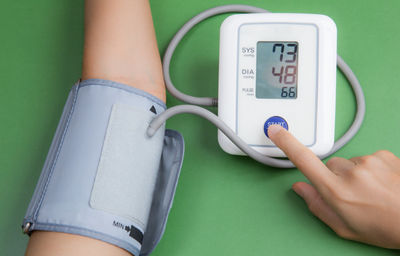
How to measure Blood Pressure accurately
25.09.2023
Blood pressure testing is an important part of general health care. It’s a very effective tool for identifying your risk of developing heart disease or stroke.
Cardiovascular disease (CVD) accounts for one-third of all deaths worldwide, and high blood pressure is a risk factor for cardiovascular disease and stroke. Rates of high blood pressure are on the rise across the developed world, and more and more people are being recommended regular blood pressure testing at home.
Blood Pressure Testing at Home
You should have your blood pressure monitored at most of your GP/Medical check ups but, as these visits may be weeks or months apart, it’s a good idea to use an at-home Blood Pressure Monitor to keep an eye on your levels more regularly.
Don’t be alarmed by the idea of home testing. It’s an incredibly easy, straightforward thing to do that can really help to keep your health and wellbeing in check.
How to measure accurately at home
Check your blood pressure in the morning and evening to gauge your normal resting rate. The NHS Blood Pressure Checker has a useful tool for checking and understanding your blood pressure monitor readings.
If you’re a relatively healthy adult you should only need to check your blood pressure once a month. If you have any underlying conditions you may need to check more often and you should discuss the frequency with your GP.
How to get started
For the most accurate reading make sure your blood pressure monitor is working well and the batteries are fully charged or in full condition.
For a full 30 minutes before you take your reading you should:
Avoid caffeine
Avoid food
Not exercise or exert yourself so your heart rate is elevated.
Avoid smoking
All of these things will adversely affect your readings
Sit comfortably with your feet lying flat on the floor
Always use the same arm to record your blood pressure.
Rest your arm on a table or the arm of your chair, making sure it is level with your heart and chest.
Face the palm of your hand upwards
Attach the cuff 2cm above the crook of your elbow
Press start on the blood pressure monitor and relax
While the monitor is recording your blood pressure levels you should:
Avoid talking, moving, texting, drinking etc
Your blood pressure monitor will likely have a digital record of your readings, but it’s always good to keep a manual monitor of your figures as well to show to your GP at your next appointment. Variations and fluctuations in your blood pressure are normal, but over time you will be able to see a pattern that will inform your GP or consultant of any significant changes or concerns.
Check out our handy video guide to accurately measuring your blood pressure at home.
Need more help? We're always here to help so get in touch today.
For all your Medical and Homecare supplies give us a call at Mediworld.
We have over 40 years experience in medical, surgical, mobility and home health supplies and we're always on hand to chat if you need support or advice and don't forget to read our other great health blogs!
February 2023
Learn More Now

